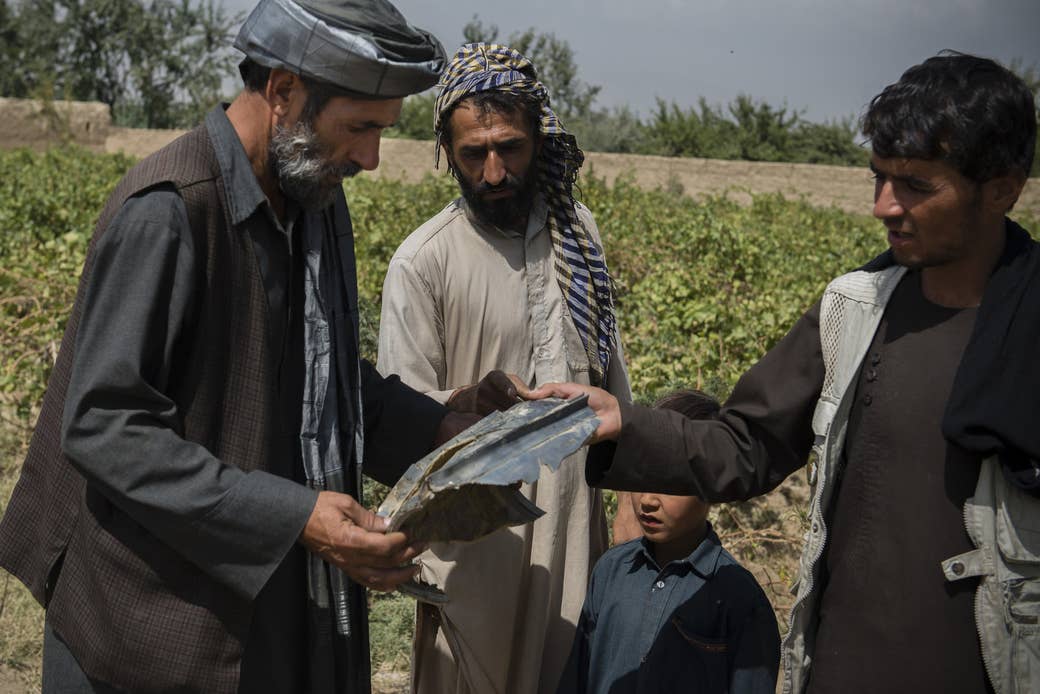
JARCHI, Afghanistan — After four months on the front line fighting the Taliban, Ahmad Zai was exhausted. It had been a hot, demanding summer for the Afghan National Police, holding territory taken from the Taliban or rushing to reinforce the army wherever the militants were on the march. So when he headed home to his village of Jarchi in early September, he was looking forward to spending time with his family.
Zai’s spirits were high. A cousin had just announced his engagement to a young woman from a local family, and it was time for a rare celebration. Zai greeted his father and mother, and after a rest, headed off with his cousins and friends to a nearby farm. As is the tradition at wedding and engagement celebrations, at some point the young men began firing their guns into the air. “We were drinking tea in the garden, waiting for sweets to arrive,” said Tufan Mohammad-Agha, 20, a member of Afghanistan’s elite commando forces. “One of us was praying.”
But the gunfire must have drawn the attention of US forces at the nearby base. It was around 9 p.m. on Sept. 3 when a 112-pound bomb came seemingly out of nowhere and struck the gathered men. The explosion shattered windows nearby, sending body parts and branches from the grapevines flying. Mohammad-Agha remembered lying on the ground barely conscious for 15 minutes, before relatives came, threw him in an ambulance, and took him to a nearby clinic. “I tried to see what was happening but I couldn’t,” said Mohammad-Agha, whose leg was badly wounded in the bombing.
He got off lucky. Zai and another relative were killed in the airstrike. “At 3 p.m. my son came home,” said Shir-Agha Mohamed, Zai’s father. “By 9 p.m. he was dead.”
Under President Donald Trump, the US is again increasing its involvement in Afghanistan, adding 3,000 troops to the around 11,000 already deployed in the country. Perhaps more significantly, the US is upping its use of airpower and expanding the leeway military officers on the ground have to call in airstrikes. According to a report by the US air force, September saw the highest number of US airstrikes in Afghanistan since 2012, with an average of five munition launches a day, up 50% from August. “This increase can be attributed to the president’s strategy to more proactively target extremist groups that threaten the stability and security of the Afghan people,” said the report.
But airstrikes can go terribly wrong, as the bombing in Jarchi, north of the capital, Kabul, showed, and that can undermine US goals, alienating Afghans and pushing them into the hands of the Taliban. No Taliban atrocity ever causes the same level of outrage.
“For Afghans, like Americans, who the perpetrator is matters about how outraged you are about the incident,” said Scott Worden, the Afghanistan director at the US Institute for Peace in Washington.
Two people were killed and three injured in the Jarchi airstrike, but its reverberations were felt beyond the tiny farming villages north of Kabul. In addition to Zai, a thirtysomething farmer named Baz-Mohamed Seyed-Aghol was killed. He and his wife had just had their first child after trying unsuccessfully for more than 15 years. Zai’s brother, 18-year-old Zazai, lost vision in one eye and may be permanently brain damaged. Weeks after the bombing, the high school student could barely walk and was unable to speak.
“I’m very angry,” said Zai’s father. “If there’s a person responsible, I would destroy them. The horror and oppression of the Taliban was never as bad as the Americans’.”
According to witnesses and local officials, US forces accompanied by a translator arrived in military vehicles shortly after the airstrike, cordoning off the area until the early morning, asking a few questions about the dead and injured, before hauling off the remains of the missile. A US military spokesperson in Afghanistan declined to comment for this story.
The markings on the missile suggest it was a Hellfire, likely launched from a Predator drone. Through an interpreter, the Americans eventually expressed regrets for the killing, collected phone numbers, and promised to call back. They never did.
Kabar Oryakhel, the local wakil, or political representative, for Jarchi and a cluster of six other villages containing as many as 4,000 households, noted with dismay how such incidents undermine the very security they are meant to uphold. “These incidents become politicized,” he said, speaking in his home less than a mile from the site of the attack. “They cause protests. If the government doesn’t respond, they escalate. The young people become emotional. And, yes, they might join the Taliban.”
Jarchi remains under Afghan government control but is slowly being contested. In Parwan province, to the northwest, Taliban fighters are making steady headway, pushing forward among the largely ethnic Pashto peoples in the Ghorband River valley toward the crucial road connecting the capital to the Panjshir Valley, just about the last large, undisputed pro-government stronghold in eastern Afghanistan.
Roadside bombs targeting passing Afghan army and police vehicles have increased. Taliban supporters recently appeared in Qarabagh, the nearby urban hub, waving their distinctive white flag. To complicate matters further, the local branch of ISIS also has begun to move in, with whispers of attempts to sway disaffected youth and former Taliban loyalists.
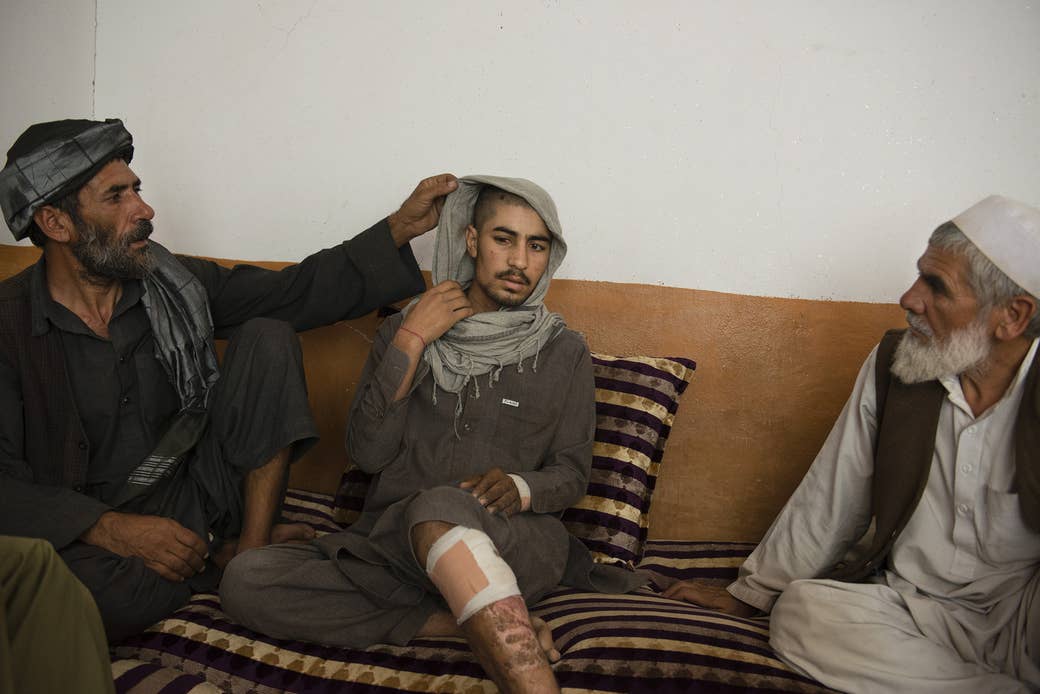
Maliar Obeid Rahman, 23, like Zai, a member of the Afghan National Police, was enraged over the airstrike. He repeated a complaint heard throughout Afghanistan — that the US no longer coordinates effectively with local forces. “Before the Americans used to come and ask questions before they killed,” he said. “Now they kill, and then they come and ask questions.”
He even suggested the Taliban and ISIS might be an improvement over the Americans. “They’re here but they’re not killing anybody,” he said. “As for the Americans, they’ve done nothing for us. Maybe it’s better that the infidels leave.”
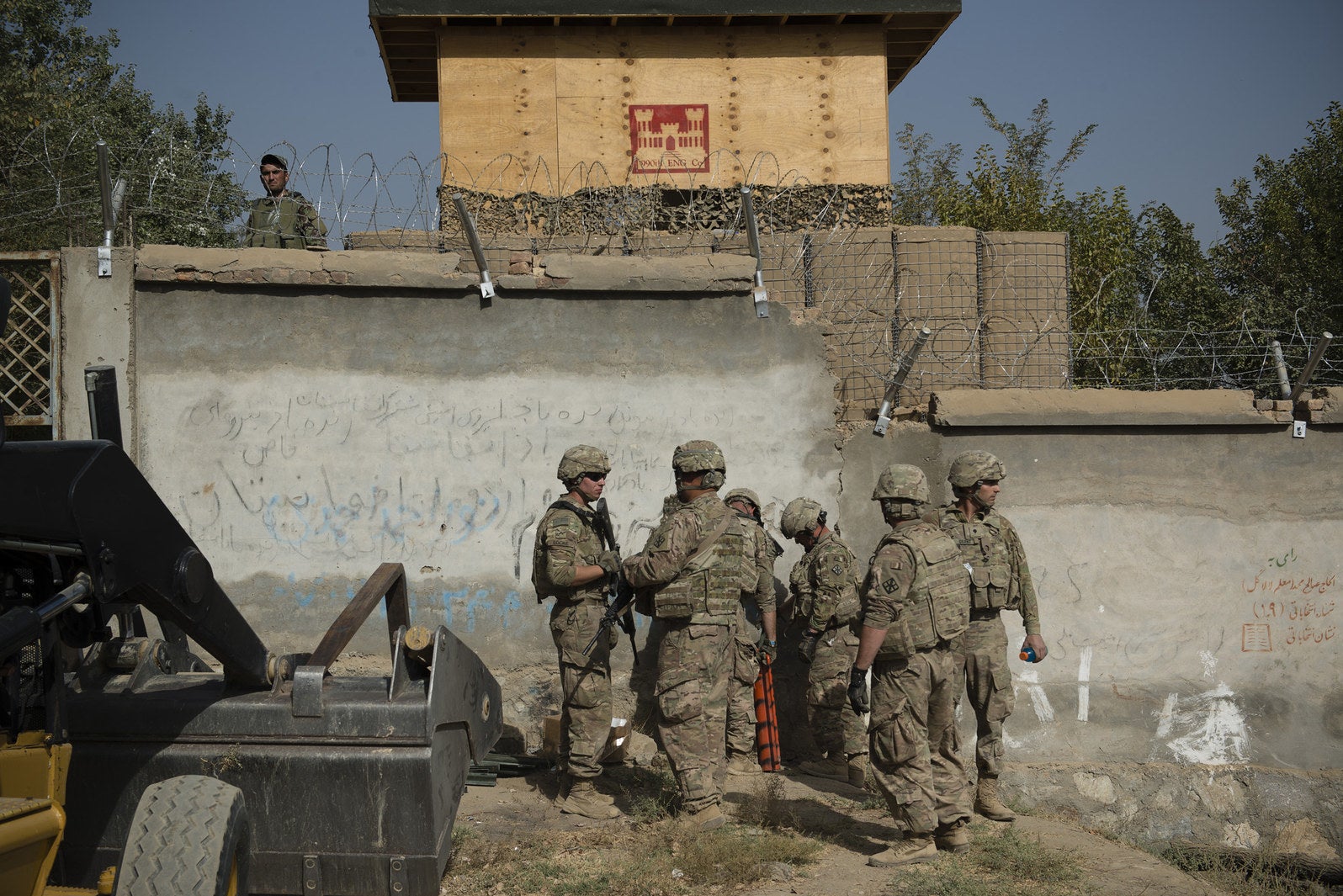
The Trump administration’s strategy, unveiled over the last several months, will likely extend US involvement in the multifaceted conflict until at least 2021, nearly 20 years since it began. The aim is to break what US military planners describe as a frustrating stalemate between the government and Taliban and convince the latter to play politics instead of war.
But that was also the Obama administration’s Afghanistan gamble when it increased US troops in Afghanistan to more than 100,000. The only difference now is that the Trump administration hopes to step back and encourage Afghan forces to take the lead on the ground while the US uses increased firepower from above to persuade the Taliban to come to the negotiating table.
Many believe the US plan to pound the Taliban to the negotiating table is a fantasy. “Moderate Taliban is like fried ice cream,” said Amrullah Saleh, Afghanistan’s former intelligence chief.
In recent weeks the Taliban have escalated attacks on US-backed Afghan forces, striking bases across the country. They say they are not interested in peace talks as long as any US troops remain in the country. “Limiting the number of [foreign] soldiers won’t solve the basic problem of Afghans, which is the occupation of the country,” Zabiollah Mujahid, a spokesman for the Taliban, told BuzzFeed News in response to a series of emailed questions. “Even if there are only 10 occupation troops in Afghanistan and they are able to bomb us, kill our people, and have the run of our air and land, it doesn’t make any difference from 100,000 occupation troops. We can’t accept even one American and will resist to the end until all the American occupation forces are out of the country.”
Increased US airstrikes have caused more civilian casualties this year — the UN mission to Afghanistan documented 95 civilian deaths due to US or US-backed airstrikes in the first six months of 2017, up 67% on the same period last year. But while such airstrikes cause only about 4% of civilian casualties, and the UN attributes the majority of civilian casualties to Taliban roadside bombs and suicide attacks, the US-caused deaths have far greater political consequences.
The Jarchi airstrike made its way into local and international news coverage, and cries of protest reached Afghanistan’s Parliament. The Taliban used it as propaganda and dredged up memories of previous US errors that have made even nighttime trips to the pharmacy a potentially deadly gamble.
Senior US officials say they are aware of the risks to civilians and try to mitigate them. “We're not the perfect guys, but we are the good guys,” US Secretary of Defense James Mattis said at a news conference in Kabul on Sept. 28.
Even as Afghans criticize escalating US-backed airstrikes and the civilian casualties they cause, they also fear a US pullout could wipe out the gains of the last 16 years.
“Everybody admits that without the US, this country will not exist,” said Haroun Mir, an analyst and scholar who once advised the late Afghan leader Ahmad Shah Massoud, the so-called Lion of Panjshir who fought the Taliban until he was assassinated by al-Qaeda two days before the Sept. 11 attacks. “The only reason we have a semblance of a united front against the Taliban is because we have the backing of the US and the international community. Without the US, this country would derail.”
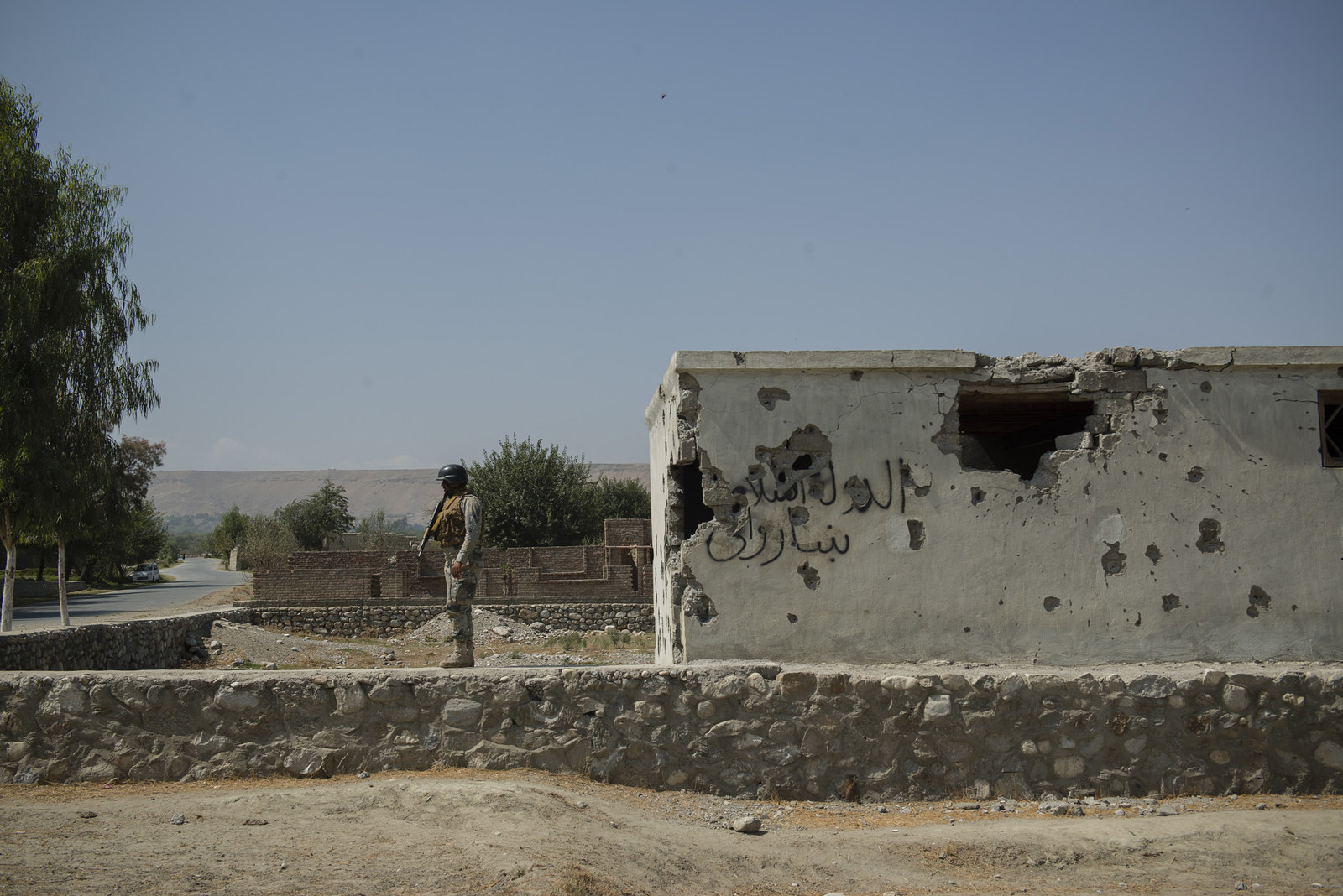
US drones flew overhead as a dozen members of Afghan National Police members led by Lt. Emad Khan-Safi made their way across the fields that lead into the foothills of the mountains separating Afghanistan and Pakistan. Armed with assault rifles, the Afghans peered cautiously from beneath their helmets at the ridges above. Until about a year ago, the Taliban controlled this district, called Kot, at the southern edge of Nangarhar province along the Pakistani frontier. Then insurgents claiming to be ISIS began heading into Afghanistan.
In Kot, they pulled down the Taliban’s white flags and raised the distinctive black flag of ISIS. They announced they were the new guys in charge, setting up their own courthouse and a square for meting out punishments. They dragged some local Taliban leaders before the townspeople and beheaded them.
Months later, US forces, including clandestine Special Forces operatives, along with Afghan troops swept in. The fighting was fierce, with many Afghan soldiers killed or injured. “It was house to house and street to street,” said Khan-Safi, a 35-year-old father of five with a stern, military bearing.“They fight to the last moment of their life.”
Much to the relief of Khan-Safi and his men, the Taliban tolerated the government as temporary allies, allowing Kabul’s forces and even the US to take on a common foe. It’s all part of the confusing and shifting alliances that make up the Afghan conflict. In some areas, the Taliban operate checkpoints by day, while ISIS takes over at night. In others, the government controls the day, while the Taliban rules the night.
Territory changes hands quickly and dramatically. In late September along the Gharband River valley, northwest of Kabul, panicked Afghan police and soldiers fled a mountain village called Siagerd to advancing Taliban. The takeover took just minutes. “If you value your life, escape now,” said one Afghan military official, as he fled east in what armed forces later called a tactical withdrawal.
Early the next morning, hundreds of Afghan soldiers and national police launched a counteroffensive, backed by US airstrikes that hammered Taliban positions.
For local Afghans, clustered in tiny mud-brick houses, it’s those very US planes that inspire the most fear. Along the ridge near the Pakistani border in the Kot district, drones constantly whirred above. Months earlier in a nearby village, a US or US-backed airstrike hit a house at night, killing two civilians and injuring two more, said Ayat-Khan Seyed Rahman, a 58-year-old farmer who proudly recounted how he served security forces as an informant against ISIS when the militants occupied his village. “We are terrified when we hear the sounds of the American planes,” he said. “We are asking the government and the Americans to be more careful."
ISIS is the newcomer to the Afghan free-for-all. During the first six months of 2017, ISIS doubled the number of its attacks in Afghanistan to 237 compared to the previous year and now boasts a presence in seven of the country’s 34 provinces, according to the UN. Members include disaffected Taliban as well as recruits from Pakistan, Uzbekistan, and Arab countries.
Diplomats say ISIS pays salaries sometimes triple what the Taliban offer, making it attractive to impoverished Afghans. Just as it has in Syria, Iraq, and Libya, ISIS feeds off broader national discord. “If there is no settlement or compromise between the government and Taliban, ISIS will continue to be a big problem,” said Abdul-Hakim Mujahid, the Taliban’s former envoy to the UN, who now works for the Afghan government. “They can exploit grievances. There is a necessity to make a political settlement with the Taliban to fight ISIS.”
But the Taliban themselves have become fragmented. The movement has changed dramatically from its founding by rural Pashtun religious zealots backed by Pakistan, when Taliban followers were educated largely in the madrassas of Pakistan and Afghanistan.
“There is a more diverse school- and university-educated generation,” said Borhan Osman, a researcher at the Afghan Analysts Network, a group of scholars who study Afghanistan. “It used to be from rural or southern Afghanistan. Now you have rural and urban fighters in Taliban ranks. The leadership is Pashtun, but there are also Uzbek and Tajik fighters.”
The Afghan media seethes with outrage at signs of rapprochement between the Taliban and Russia and Iran, traditional Taliban foes. Amrullah Saleh, former head of Afghanistan’s National Directorate of Security, the country’s primary intelligence agency, said that he pressed Iranian counterparts in July on why they were cultivating ties with the Taliban, with whom they nearly went to war in 1998, after the group executed 11 employees of Iran’s consulate in Mazar-i-Sharif. “Iranians tell me, ‘We are convinced the Taliban is poison, but to neutralize the poison we have to study it,’” he said.

Sorting out who is who in today's Taliban can be mind-boggling. Some Taliban factions are considered amenable to a compromise with the government in Kabul. Others are beholden in varying degrees to Pakistan, Iran, or Russia. Some, such as the Haqqani network, which was behind the kidnapping of a Canadian-American family, are regarded as hardcore ideologues. The Pentagon counts as many as 20 insurgent and terrorist networks operating between Afghanistan and Pakistan.
“Yes, we can live alongside the Taliban,” said Gen. Nassir Ahmed Safai, commander of Afghan Police Forces in four eastern Afghanistan provinces, including Nangarhar province. “But which Taliban? They are all going in different directions.”
Occasionally tribes or groups identify with the Taliban after they have a falling out with the government or with other locals.
“Sometimes people in a district have a vendetta against another group and they join with the Taliban in order to take revenge,” said Attaullah Khogyani, spokesman for the governor of Nangarhar, which includes both Kot and Jalalabad, Afghanistan’s fifth largest city, and abuts Pakistan’s most violent and lawless areas to the south and east.
Adding to the overlapping violence is rising criminality. Afghanistan’s ubiquitous poppy fields enjoyed bumper crops in recent years, fueling local opium markets and global heroin trafficking. There also are smuggling rings of other types, including those transporting exotic animals. Earlier this year, Afghan authorities foiled a scheme to smuggle six rare white lions from Afghanistan to Pakistan.
Government officials like Khogyani are under constant threat of assassination. They increasingly find themselves barricaded behind an expanding series of blast walls, sandbags, razor wire, and checkpoints manned by gunmen, their worlds shrunk to small, dark offices inside government compounds.
“There is the Taliban, Haqqani, but there are also gangsters and mafia,” said Khogyani. “There is kidnapping. They target elites — doctors, lawyers. And this kidnapping may or may not finance the militants, but it definitely lowers trust in the government. So how do you tell them apart, the criminals from the insurgents?”
For decades, Gulbuddin Hekmatyar lorded over Afghanistan, battling Russian invaders during the 1980s, fighting fellow Afghans for control after the Soviets pulled out, then fleeing to Iran when the Taliban took over, before joining them in 2003 to oppose the US presence. He was considered an outlaw by the Afghan government and labeled a terrorist by the US State Department.
Then, last year, Hekmatyar cut a deal with the government of President Ashraf Ghani, endorsing the political process in exchange for immunity for his alleged crimes. The warlord became a party leader, campaigning as a regular politician, delivering speeches at Friday sermons, and calling on Taliban leaders to cash in their chips and play politics ahead of crucial July 2018 parliamentary elections.
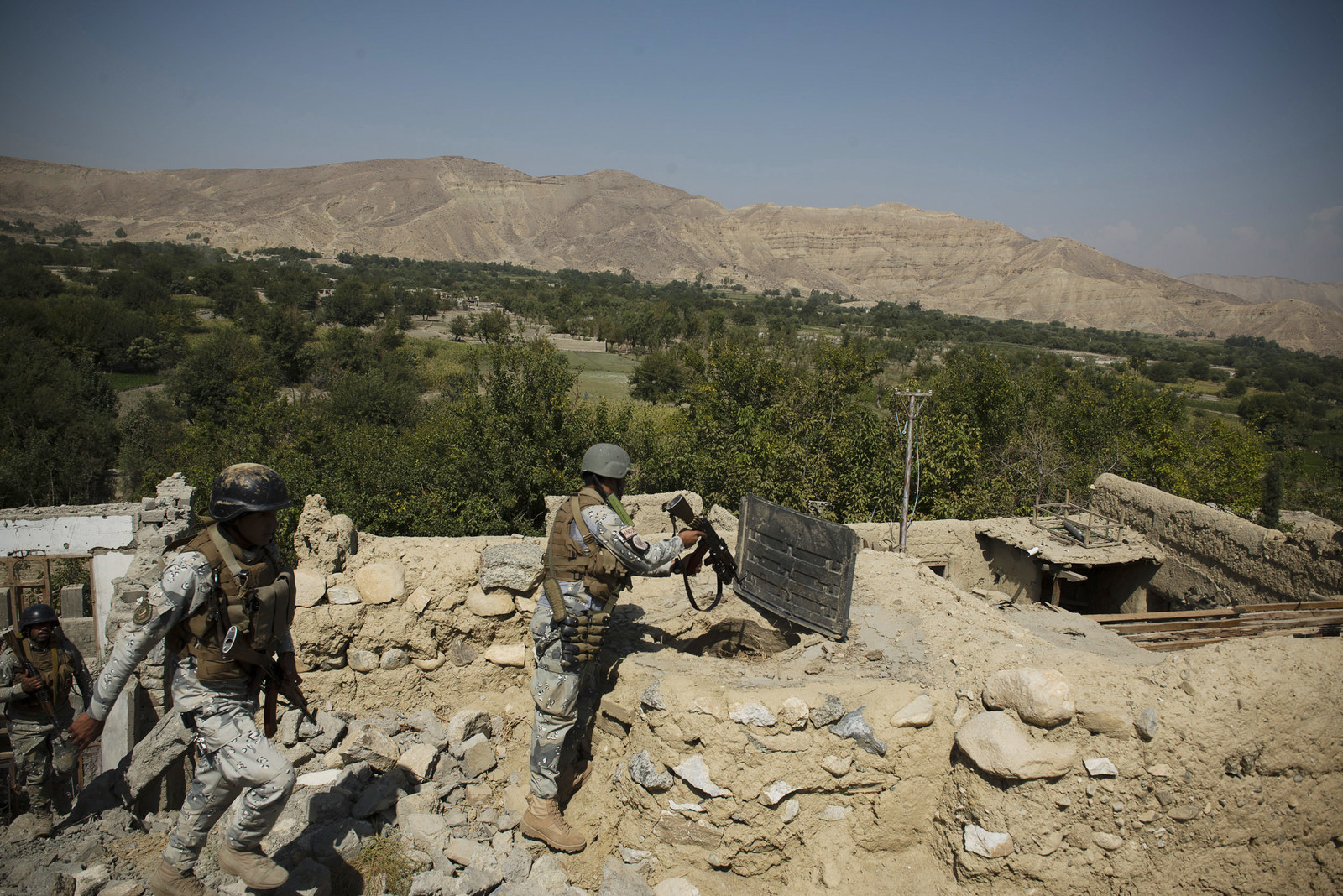
What happened in September might explain why Taliban leaders are wary of making peace with the government and ending their insurgency.
One Friday prayer, as Hekmatyar delivered a speech in the city of Herat, someone stood up and tossed a shoe at him, a gesture of disrespect in Afghanistan. Video and photos of the incident went viral on Afghan social media and the country’s media outlets. The once-feared warlord became a YouTube joke.
That humiliation, some say, is what the Taliban fear — and why they can’t stop fighting or temper their demands, regardless of how much military pressure the US brings to bear. And that could unravel the entire US strategy of using airpower and propping up Afghan forces to force the Taliban to peace talks.
The Taliban’s envoys and intermediaries sometimes say the group is prepared for peace talks. Zabiollah Mujahid, the Taliban spokesman, said the group now respects Afghan minority groups, has no aspirations beyond Afghanistan, and wants good relations with the outside world. UN officials meet with Taliban envoys in Qatar to voice concerns about civilian casualties and draw the group into peace talks. “The Taliban know they’ll never come to power like before," said Wahid Mozhdah, a former Afghan diplomat who served under the Taliban and continues to maintain contacts with the group.
In his speech to the UN this year, Trump called the Taliban a terrorist group and said he’d changed the rules of engagement in Afghanistan to allow for a tougher military response. But the US has yet to officially label the Taliban a terrorist organization and most US national security officials are convinced the Taliban could be drawn to the negotiating table with the promise of an “honorable peace,” said Worden.
“They want foreign troops gone,” said Worden. “They want a share of political power in Afghanistan. They want honor and dignity in their communities and immunity when they stop the fighting. They don’t want to be arrested and sentenced for being soldiers.”
But others see that assessment as too optimistic. Many Afghan officials and people close to the Taliban say a significant segment of the group’s leadership are convinced they can reclaim the power they had before — while fearing that coming to the negotiating table will immediately lessen their appeal to the public and embolden their critics to throw shoes at them.
“My understanding is that military pressure will not work to bring the Taliban to the table,” said Osman, the expert at the Afghan Analysts Network, who regularly speaks with the Taliban. “I don’t think you can pressure a movement like the Taliban which is deeply rooted in parts of society. They have a much higher morale for continuing the war. The preparations for a lengthy war are there. There is a new generation coming along.”
There are numerous signs that the Taliban may not be ready for peace. While they agree to talks in theory, their leaders demand to sit at the table with the US, not with the Afghan government. Agreeing to such a condition would undermine the very Kabul government the US seeks to empower.
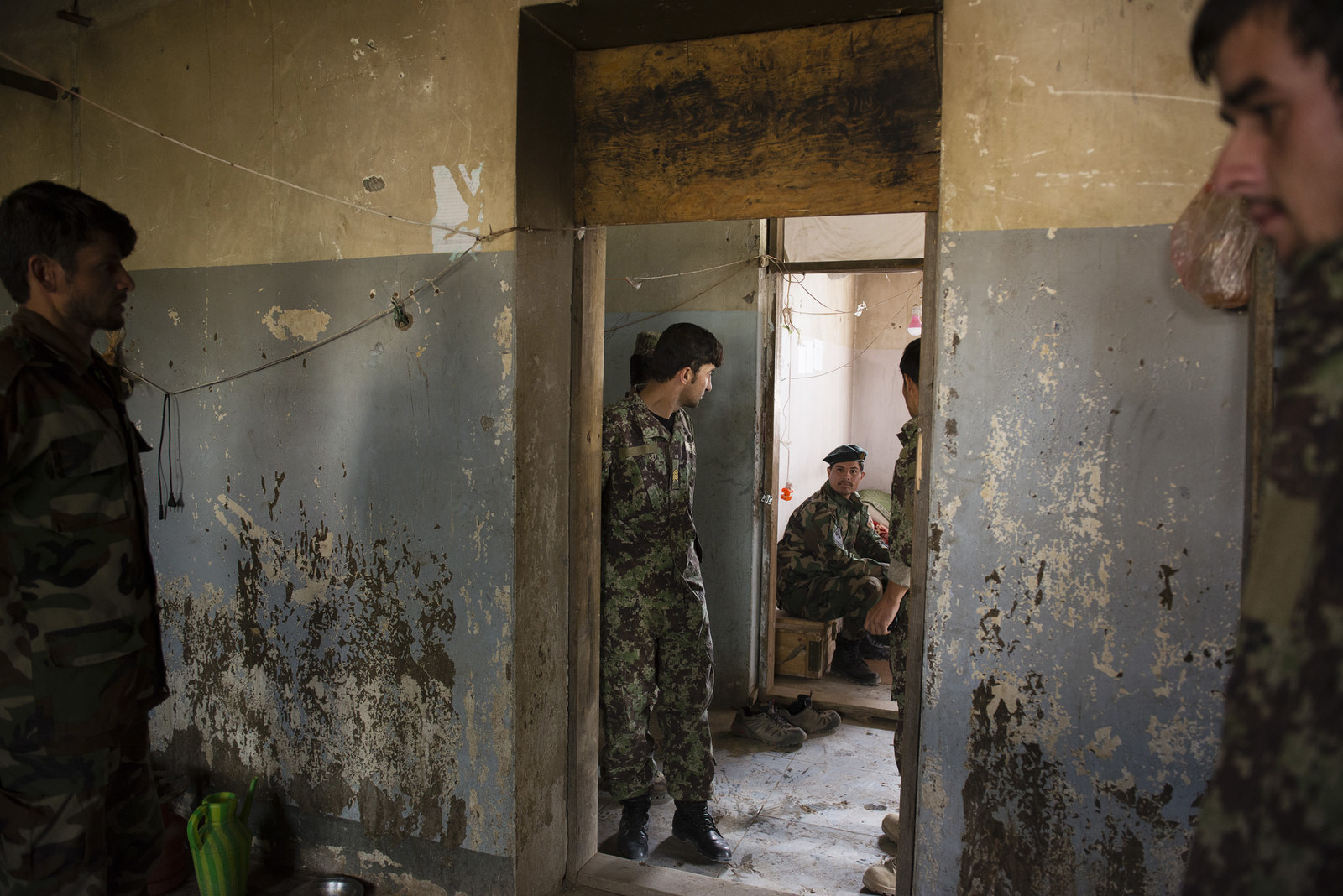
Some suspect the Taliban dangle the promise of peace talks as part of a military strategy that seeks any advantage on the ground and rarely refrains from brutality.
“It speaks out of both sides of the mouth,” said one UN official involved in overseeing the distribution of aid throughout the country, accusing the Taliban of publicly welcoming international cooperation while its fighters menace and kill humanitarian workers on the ground.
The suggestion of possible peace talks also gives the Taliban time to rebuild their forces and a measure of credibility among those in the international community inclined to blame the US for all of Afghanistan’s troubles. “When the Taliban fights us in the battlefield and the politicians engage in peace talks, it demoralizes our troops and our people,” said Fawzia Koofi, a member of the Afghan Parliament and women’s rights activist.
Haroun Mir, the analyst, cited numerous ways Afghanistan has changed since the time of the Taliban’s rule, and wondered how the Taliban would fit into the country today. “We have a free media. Women are free to work and study,” he said. “How many different channels do we have? How many people can criticize the government, even at the very top? Would the Taliban accept this kind of environment? Would it accept this government?”
Probably not, according to the Taliban. The Taliban’s spokesman derided Afghanistan’s shaky, fledgling “democracy” as a Western imposition and dismissed the government of Ashraf Ghani as a “slave and puppet of America” set up by former secretary of state John Kerry. “The government of Ashraf Ghani has no value or legitimacy for Afghans and for us,” said Zabiollah Mujahid. “The political system that Afghans sacrificed 40 years to achieve is an Islamic system. We want an Islamic system in our country because our people are Muslim and don’t accept imported foreign systems.”
The Taliban now control 45 of Afghanistan’s 398 administrative districts and are contesting another 118, according to the UN. In parts of Afghanistan they control they rarely brook criticism and menace critical journalists. They have occasionally shown pragmatism, allowing girls to attend school when there is widespread public demand. (Mujahid said girls can attend school as long as they’re educated separately and differently than boys.) The Taliban permit international charities to operate, as long as they serve the Taliban’s needs. They collect taxes, provide a simple version of justice, and dispense public services. When someone’s daughter needs surgery and the government can’t pay for it, the local Taliban will kick in, building credibility and goodwill with the population while undermining faith in the central government.
The US may not have a lot of time to figure out an acceptable Afghan exit that salvages any gains without further drawing American forces into the conflict. For ordinary Afghans caught between warring sides, life is quickly deteriorating. Saif al-Rahman Muzamel, 38, was watching his 10-year-old son Suhail walk to school when a US or Afghan airstrike hit a suspected Taliban stronghold in Kunduz province in September. Shrapnel from the explosion badly mangled Suhail’s left arm. Muzamel gathered Suhail in his arms, and spent the next few hours struggling to get the boy to a clinic in the city of Mazar-e-Sharif. There he was bandaged and treated. Next came the harrowing and expensive days-long journey to the hospital run by the Italian humanitarian aid group Emergency in Kabul, where Suhail is recovering.
“You don’t know where they are, neither the Taliban nor the drones,” said Muzamel, sitting by his son at the hospital.
The war has displaced millions of civilians, adding to the crushing burden on international relief agencies and the Afghan government. The number of people fleeing their homes in Afghanistan rocketed from 100,000 in 2010 to more than 650,000 last year, according to the Internal Displacement Monitoring Center. Many wind up fleeing their ancestral villages for the relative safety of the big cities, creating new social problems. Jan-Agha Mohammad-Khan, 22, was farming opium and wheat in Uruzgan province until eight months ago when fighting engulfed his hamlet.
“Life got very hard,” he said, standing with others in a mud-brick shantytown in Kabul that serves as makeshift camp for displaced Afghans. “There was a lot of fighting. The Taliban came. They were on one side. And the soldiers were on another side. Both sides are making trouble for the people.”
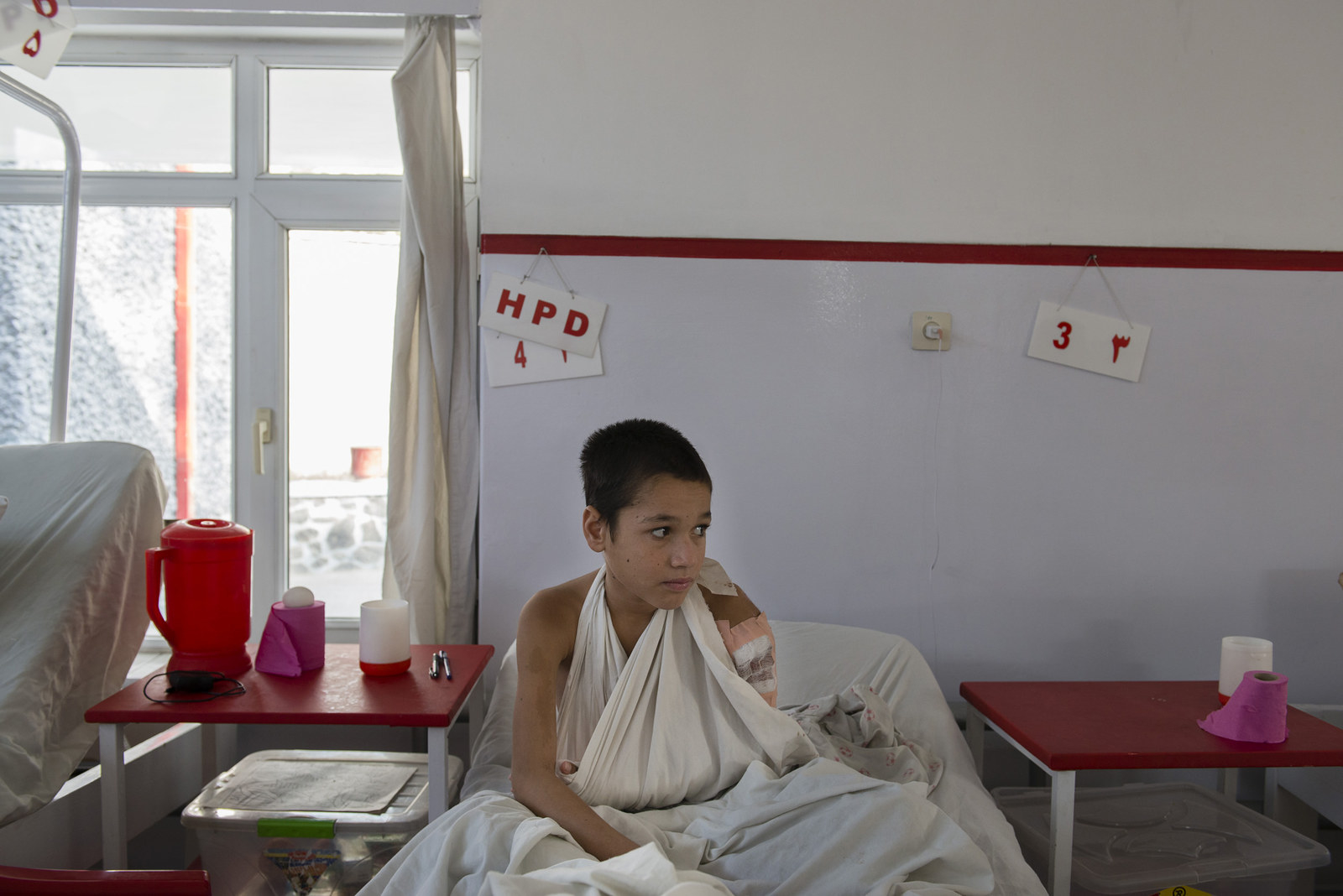
He said he lost seven close relatives in the recent fighting, but would gladly return home if there were peace and eke out a living as a farmer, as opposed to earning $3 or $4 a day selling pomegranates along the roadside or working as a day laborer. “I would never join the Taliban, or the army,” he said. “If I hurt people, I will have to answer God.”
In the village of Jarchi, a month after Ahmad Zai’s death, his mother, Safia, spent hours each day mourning over his simple unmarked grave. One Friday afternoon, she huddled with her sister and several younger women from the village, who tried to console her. She remained in a state of shock, and kept striking herself on her thigh. Unlike her son’s young friends and relatives, she was not consumed with anger against the Americans, just lost in despair and hopelessness.
“What can I do?” she said of her eldest son’s death.
Naiemullah Sangen and Kiana Hayeri contributed reporting.

